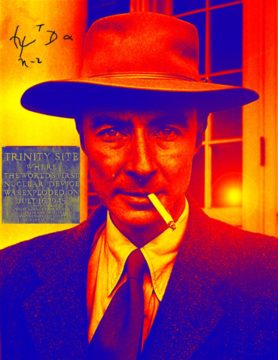by Ashutosh Jogalekar

This is the fifth in a series of essays on the life and times of J. Robert Oppenheimer. All the others can be found here.
Between December, 1941, when the United States entered the Second World War and July, 1945, when the war ended and two revolutionary weapons had been used against Japan, Robert Oppenheimer underwent an astonishing transformation that stunned his colleagues. From being an ivory tower intellectual who quoted French and Sanskrit poetry and who had led nothing bigger than an adoring group of graduate students and postdocs – not even a university department – he became the successful leader of the largest scientific and industrial enterprise in history, rubbing shoulders with cabinet secretaries and generals and directing the work of tens of thousands of individuals – Nobel laureates and janitors, physicists and chemists and mathematicians, engineers and soldiers and administrative staff. One cannot understand this transformation without tracing its seed back to momentous scientific and political world events in that troubled decade of the 1930s. I can barely scratch the surface of these events here; there is no better source that describes them than Richard Rhodes’s seminal book, “The Making of the Atomic Bomb.”
In December, 1938, working at the Kaiser Wilhelm Institute in Berlin, chemists Otto Hahn and Fritz Strassman found that uranium, when bombarded by neutrons, split into two small, almost equal fragments, a process that came to be called nuclear fission. This transformation was completely unexpected – the atomic nucleus was thought to be relatively stable. While physicists had bombarded elements with neutrons since the discovery of the elementary particle in 1932, all they had seen was the chipping off or building up of nuclei into elements one or two places above in the periodic table; the breaking up of uranium into much smaller elements like barium and xenon was stunning. When Hahn wrote his colleague Lise Meitner – an Austrian Jewish physicist in exile in Sweden – and her nephew Otto Frisch about this result, the two physicists prophetically figured out on a hike that the process would release energy that could be explained by Einstein’s famous equation, E =mc^2. When uranium breaks up, the two resulting pieces weigh slightly less than the parent uranium – that tiny difference in mass translates to a huge difference in energy according to Einstein’s formula. How huge? Several million times more than in the most energetic chemical reactions. Read more »
